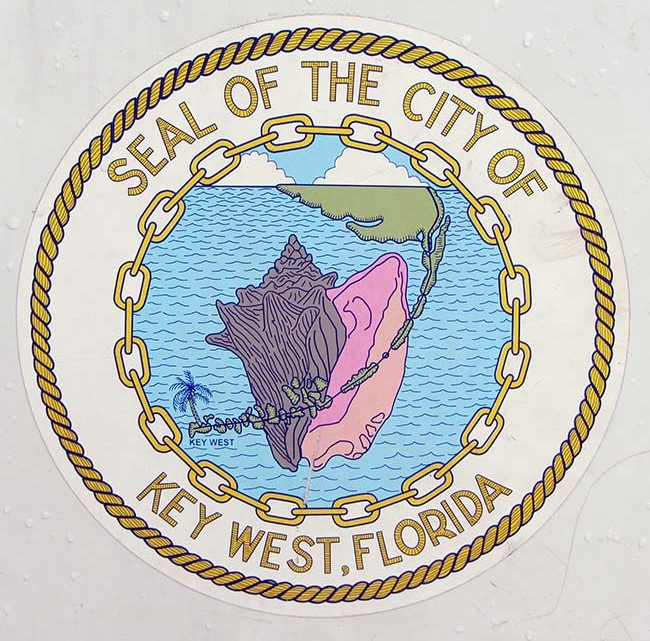Key West greenhouse gas reduction only 20 percent of 10-year goal
BY PRU SOWERS
KONK LIFE STAFF WRITER
When it comes to energy conservation in Key West, critically important to an area affected by sea level rise, a recent report indicated the city is far behind where officials expected to be.
In fiscal year 2005, city officials established a 10-year goal to reduce all greenhouse gases produced in Key West by 15 percent. But in an Oct. 16 report to city commissioners, Sustainability Coordinator Alison Higgins showed that greenhouse gas production by city-owned operations has gone down only three percent over the 10-year period. And the result from non-city operations, which includes all residential and commercial buildings, showed that greenhouse gas output has been reduced even less, by three-tenths of one percent during that same time period.
While the result of the 10-year plan is nowhere near expectations, Higgins outlined the difficulties in attaining a 15 percent reduction in greenhouse gases, which have been proven to reduce the earth’s protective ozone layer, leading to an increase in planet’s temperature. Greenhouse gases are created locally primarily by electricity use and production, which accounts for 62 percent of the gases produced in Key West. Also contributing locally are gasoline fumes from cars and other vehicles, 23 percent; diesel fuel, 5.3 percent; propane, 4.2 percent; and emissions from the local landfill, 2.2 percent.
Higgins pointed out that over the past 10 years, the number of new city electricity accounts has shot up as residential and commercial development increased. There are also new city-owned buildings and services, including the amphitheater at Truman Waterfront Park and two new water splash pads at the waterfront park and Cozumel Park, that have boosted electricity use.
“We’ve added hundreds of more [electric] accounts over time. We’ve added major new buildings,” Higgins said. “We’ve actually decreased [city-produced greenhouse gas production] by three percent while adding other uses. So, we’ve actually done a really great job to get there.”
On the community side, Higgins said the three-tenths of one percent reduction in greenhouse gas production is going to be a challenge to improve. She pointed to the boom in smart phones and other new electronic devices that require constant recharging. Convincing people to reduce their electricity use is difficult, she said.
“That’s harder to control. It’s not ours. We don’t own it,” Higgins said, referring to private properties in Key West.
Despite the discouraging progress in reducing greenhouse gases, it could have been worse. Higgins said the city has made strides in creating building and planning policies that have helped to hold down energy use. There are 500 to 600 new building permit unit allocations that require the properties to be green building certified. The city also has a Climate Action Plan that lays out 98 “action tools” to reduce energy use. Of those 98 tools, 25 are completed or are being done on an on-going basis, including requiring garbage collection waste to be converted to electricity, creating an educational partnership with Keys Energy, replacing the streetlights on Duval Street and in the Key West Bight with energy-saving LED bulbs, and allowing houses in the historic district to install white roofs to help repel the sun’s rays.
Higgins said another option city officials are discussing is to apply the “green” building codes to properties that are being redeveloped, not just newly-build structures.
“We’ve done a lot on the residential side. But we’ve got no policy that helps on the commercial side. When we’re almost all redevelopment because we’re built out, that is the only place you’re going to find [energy efficiency savings],” she said.
The lack of hoped-for progress in energy reduction was dismaying to the commission. Mayor Teri Johnston said one of her goals is to work with City Manager Greg Veliz to develop ways “to make up some lost time” on the 15 percent greenhouse gas reduction goal.
“We’re really far off on our climate action plan goals,” Johnston said. “We were supposed to have $1.7 million in salaries just geared towards climate action plans and we just haven’t gotten there.”
On the positive side, former city Energy Manager Terrence Justice, who was recently promoted to take over the city building department, reported that since he was hired as the part-time energy manager in 2017, the city has saved approximately $100,000 in energy bill reductions through various efforts including efficiency audits of various city departments and buildings, and installing amber lightbulbs in the light posts at Smathers Beach. Previously, the city continued to pay Keys Energy for 12 months of lighting usage at the beach even though the lights were turned off six months of the year during sea turtle nesting season. Unlike the former powerful white lighting at the beach, the amber bulbs will not interfere with the just-hatched turtles making their way to the sea.
“We now have [state Fish and Wildlife Conservation Commission] approved amber lights that stay on year-round,” Justice said. “Pedestrian safety is no longer a concern and the turtle nesting is no longer a concern.”
[livemarket market_name="KONK Life LiveMarket" limit=3 category=“” show_signup=0 show_more=0]





No Comment